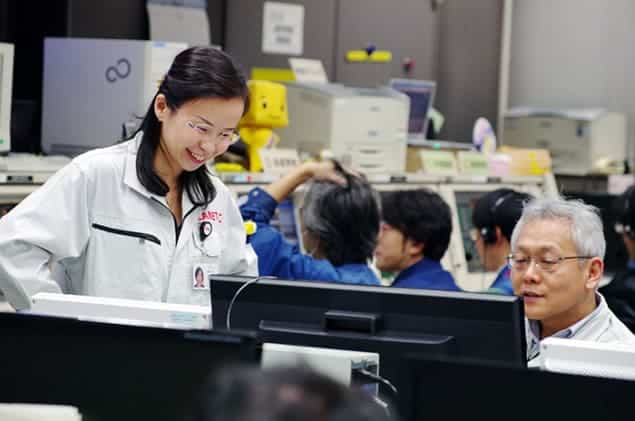
Japan’s Akatsuki spacecraft has finally entered orbit around Venus after taking a five-year detour through the solar system. Launched in May 2010 by the Japanese Space Agency (JAXA), Akatsuki failed in its first attempt at entering orbit around Venus and has spent the last five years circling the Sun. Now that the mission is back on track, Akatsuki will study the planet’s violent atmosphere and could confirm if there are active volcanoes on its surface.
After making the seven-month journey to Venus in 2010, Akatsuki began firing its thrusters to put it in orbit around the planet. Instead of firing for more than 9 min as required, the thrusters shut down after 2–3 min and the spacecraft put itself into a “safe mode”. By the time JAXA engineers had worked out what had happened, it was too late to complete the manoeuvre.
Second time lucky
A second chance came three days ago, when Akatsuki approached Venus again and the thrusters were fired for 20 min. JAXA has now confirmed that the probe is in a stable orbit that will take it as close as 400 km to the surface of Venus. Regular operation of the probe’s scientific instruments is scheduled to start in April 2016.
Akatsuki means “dawn” in Japanese, and the 500 kg probe cost around $220m to build and launch in 2010. Akatsuki is expected to gather data for two years using its five on-board cameras. Two of these instruments operate in the near-infrared regime and will study the planet’s surface and the motion of clouds, as well as the size of particles that make up the clouds. A long-wave infrared camera, meanwhile, will measure the temperature at the “cloud top”, which lies around 65 km above the planet’s surface.
Lightning and airglow
The final two cameras are an ultraviolet imager to measure sulphur dioxide at the cloud top, and a lightning and airglow camera, which will capture lightning flashes that have never been observed on the planet before.
Often called Earth’s “sister planet” thanks to its similar mass and size, Venus orbits closer to the Earth than any other planet in our solar system. However, Venus’s climate is very different from that of Earth. Its atmosphere contains mostly carbon dioxide and is a sultry 460 °C, with the high temperatures believed to be caused by a “runaway greenhouse effect”. And while Venus rotates at around 6.5 km per hour, its atmosphere rotates at a violent 360 km per hour. Akatsuki should soon boost our understanding of what lies within Venus’s blankets of cloud.



